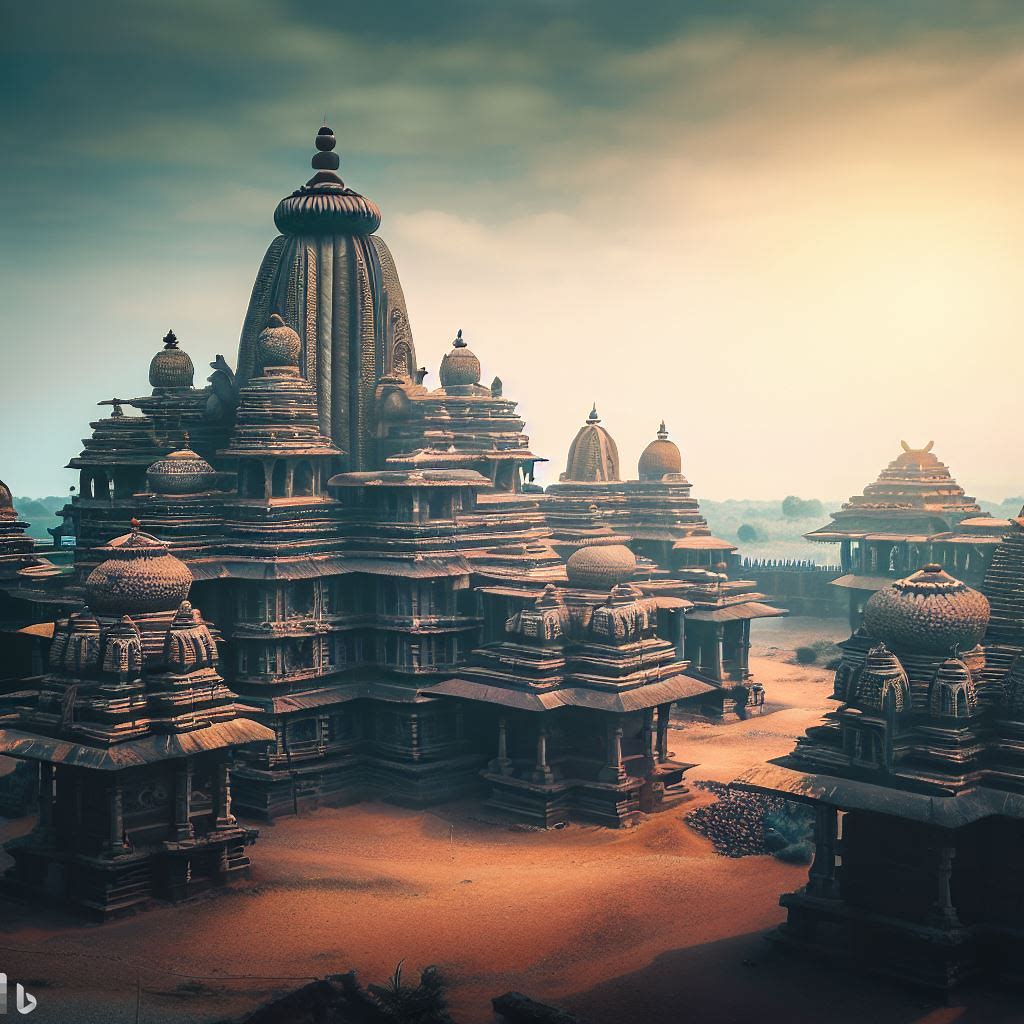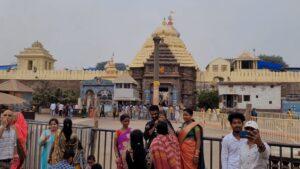India proclaims a lot of mesmerizing ancient temples that stand as living testaments to the country’s rich cultural heritage. It is a land, steeped in history, mythology, and spirituality. These magnificent architectural marvels not only showcase the skills of ancient craftsmen but also offer a gateway to the past, revealing the beliefs, traditions, and societal values of ancient civilizations.
Embarking on a journey to explore these mesmerizing ancient temples provides an immersive experience, delving into the depths of India’s past while witnessing the spiritual fervor that continues to thrive in these sacred sites.
Historical Significance: Glimpse into India’s Past
Roots of India’s ancient temples stretch back thousands of years, drawing from a fabric of historical events and mythological tales. Each temple is a repository of the past, showcasing the influence of different dynasties and the evolution of architectural styles over time.
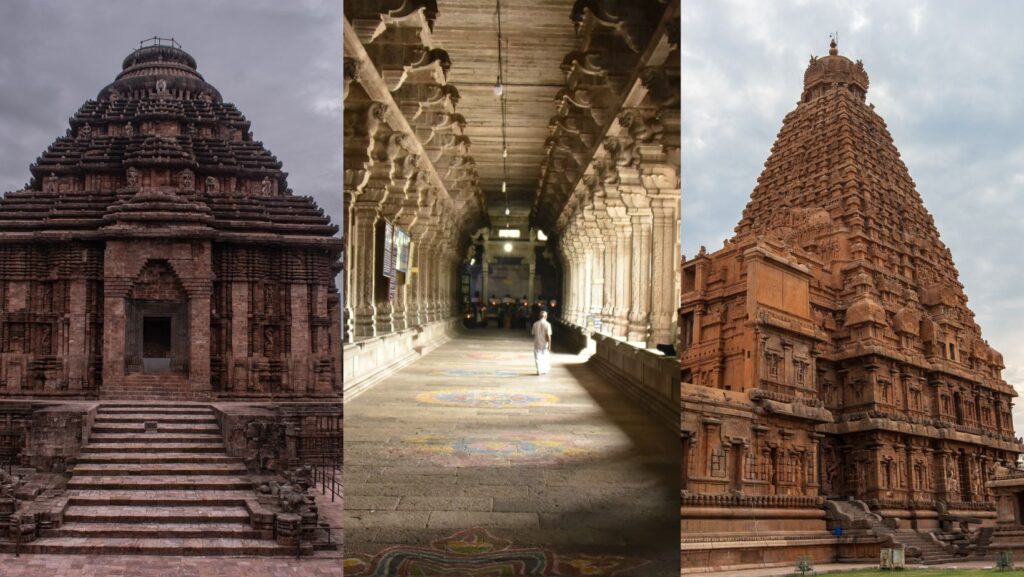
- Dedicated to the sun god Surya, the Kalinga dynasty built the stunning Sun Temple in Konark, Odisha, showcasing their architectural brilliance. The intricate carvings on the temple walls depict scenes from Hindu epics like the Mahabharata and Ramayana, offering insights into ancient literature and cultural practices.
- Brihadeswarar Temple in Thanjavur, Tamil Nadu, constructed during the reign of the Chola dynasty, stands tall as a testament to the engineering marvels of its time. Built entirely out of granite, its massive tower, or vimana, rises 216 feet, signifying the might and grandeur of the Chola rulers. These temples narrate the stories of kings, queens, and the lives of ordinary people, providing a holistic understanding of India’s historical fabric.
Architectural Brilliance: Marvels of Engineering and Art
One of the most captivating aspects of India’s ancient temples is their architectural brilliance, blending artistic finesse with engineering insight. The craftsmanship is evident in the intricate carvings and sculptures that adorn the temple walls.
Sculptures depict gods, goddesses, celestial beings, and mythological narratives, reflecting the artistic prowess of the craftsmen. Symbolism also plays a significant role in temple architecture. The temple layout often mirrors the cosmic order and the network of life.
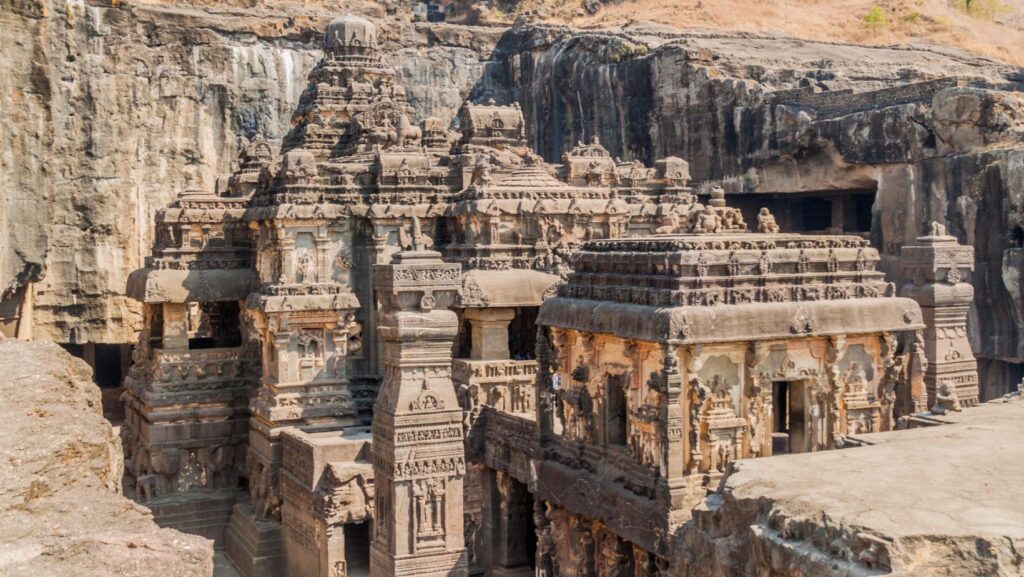
Kailasa Temple in Ellora, carved from a single rock, represents the sacred Mount Kailash, the abode of Lord Shiva. Temple’s unique design not only showcases the mastery of sculptors. It also emphasizes the spiritual significance of Mount Kailash in Hindu mythology.
Spiritual and Cultural Significance
India’s ancient temples remain active centers of worship. People from all walks of life gather to seek blessings and offer prayers to their deities. These temples hold profound spiritual significance, serving as pillars of faith that unite communities and transcend cultural boundaries. Pilgrimage to these temples is an integral part of the spiritual journey for millions of devotees.
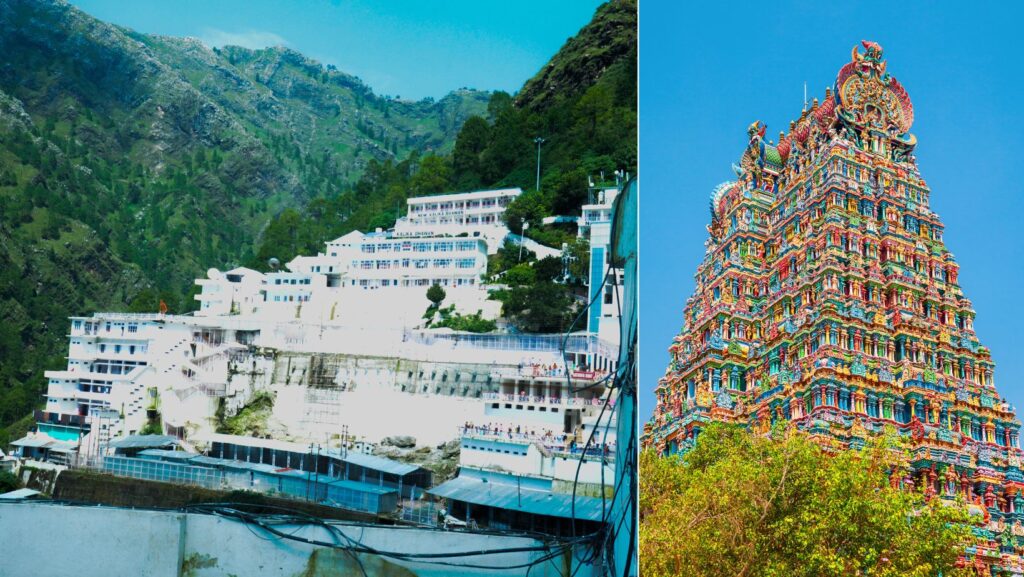
- Trikuta Mountains host the Vaishno Devi Temple in Jammu and Kashmir. It draws countless pilgrims undertaking a challenging trek to seek the blessings of the divine mother, Vaishno Devi. The journey not only tests one’s physical endurance but also strengthens their spiritual connection.
- Meenakshi Temple in Madurai, Tamil Nadu, hosts the grand Chithirai Festival. It is a 10-day extravaganza celebrating the divine wedding of Lord Shiva and Goddess Meenakshi. The festivities unite people in joy and devotion, fostering a sense of communal harmony.
Prominent Ancient Temples in Different Locations
India’s ancient temples are spread across the length and breadth of the country. Each location is boasting its unique architectural styles and cultural influences.
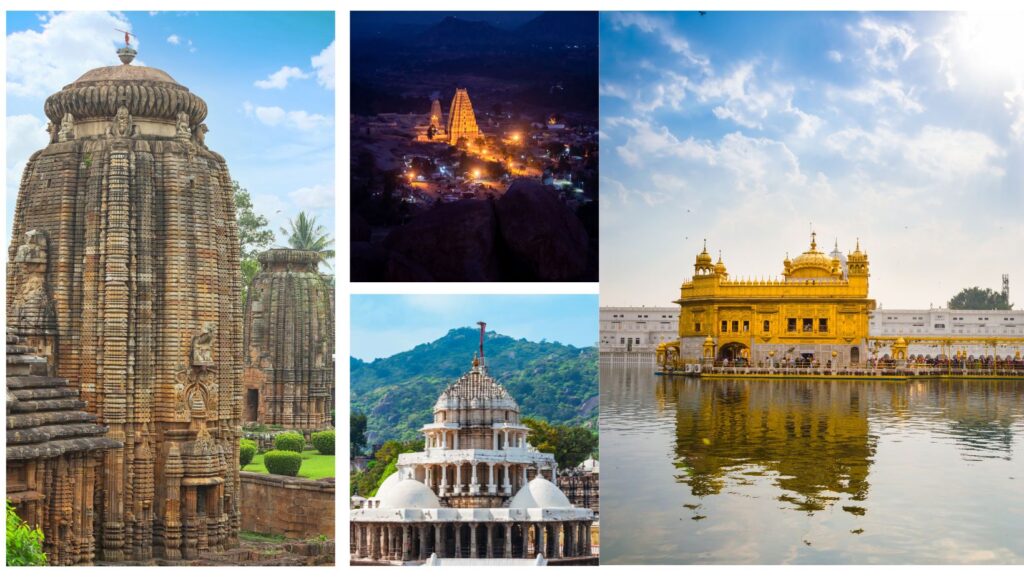
- Golden Temple in Amritsar, Punjab, is the holiest shrine in Sikhism, attracting millions of devotees from around the world. Its breathtaking golden facade glimmers in the reflection of the Amrit Sarovar, the holy tank surrounding the temple.
- Virupaksha Temple in Hampi, Karnataka, is part of the ruins of the ancient Vijayanagara city. It is a testament to the architectural and artistic achievements of the Vijayanagara dynasty.
- Lingaraja Temple in Bhubaneswar, Odisha, is a classic example of Kalinga architecture. It is featuring a 180-foot-high spire and beautifully carved sculptures that narrate stories from Hindu mythology.
- Dilwara Temples in Mount Abu, Rajasthan, showcase exquisite Jain architecture with intricately carved marble pillars and domes. These temples are a testament to the devotion and artistic excellence of Jain followers.
Mysteries and Legends: Allure of Ancient Temples
These ancient temples are hidden in fascinating legends and mysteries beyond their architectural magnificence.
- Temples of Khajuraho, with their stunning sculptures depicting various aspects of human life, have long intrigued historians and art enthusiasts.
- Origin of Meenakshi Temple in Madurai is dedicated to Goddess Meenakshi and Lord Shiva. This temple is steeped in mythological tales of divine intervention.
- Ramappa Temple in Warangal, Telangana, is rumored to have an underground passage leading to a hidden chamber.
Preserving India’s Cultural Heritage
- Preservation of India’s ancient temples is a matter of utmost importance to safeguard the country’s cultural legacy for future generations. Various organizations and government bodies are actively engaged in restoration efforts, ensuring that these architectural gems remain intact.
- Promoting responsible tourism also plays a crucial role in preserving these heritage sites. Sustainable tourism practices not only minimize the ecological footprint but also raise awareness about the significance of these ancient temples. They are encouraging visitors to respect and cherish the cultural heritage they represent.
India’s ancient temples are not merely relics of the past. They are living entities that continue to inspire awe and wonder in people of all backgrounds. Each temple represents a unique blend of spirituality, art, and engineering, making them timeless treasures of India’s heritage.
Exploring these enchanting temples offers a profound and transformative experience, connecting visitors to the essence of India’s history and spirituality. We ensure that the legacy of India’s ancient temples remains alive. We are inspiring generations to come with their majestic beauty and enduring spirituality by cherishing and preserving these cultural gems.
Keep on Reading: Top Destinations To Explore in India: Where To Go Each Month
